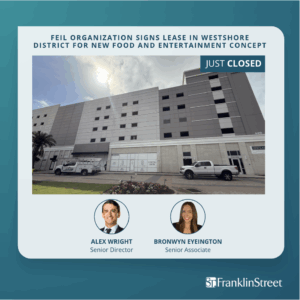It seems that the United States is finally getting the COVID-19 disruptions under control. Between the massive government investment of PPP loans, disaster relief loans for businesses and freezing rent increases and evictions, we have been able to land somewhat on our feet.
The same is true for the real estate world. The residential market has boomed between refinancing and new home sales and the commercial market has seen stabilization of its occupancy lease rates. While there are always exceptions to the rule on both sides, we are seeing commercial and multifamily debt financing making a full comeback. Fannie Mae and Freddie Mac have reduced the COVID reserve requirements down to six months and in many instances, where the loan-to-value (LTV) ratio is lower, have removed the restrictions all together. Community banks have already begun to increase their LTV lending guidelines, meaning borrowers are able to stretch to secure higher valued buildings.
That is not by accident – the perceived risk of the pandemic resurging is low, and there is greater confidence among the Executive Loan Committees of tenants being able to afford their monthly rent checks. These small shifts have in turn created a new lending landscape that is in full swing. We have seen multiple regional banks being able to offer partial and full-term interest-only options as a way of gaining market share against competitors. This aggressive lending was unheard of over the last year.
Despite major steps towards normality in these markets, there is still one lagging product type – hospitality lending. The reason for this is born out of the fact that this asset type serves as both a business and a building, meaning that there is higher risk than just a regular multifamily building. Due to the high-cost nature of running a hotel, there are tighter margins, and the worry is that hotel operators will fall into deferring payments and possible bankruptcy if bookings begin to lag again. We predict this will change, as many consumers in the United States have not been able to travel abroad this year and are instead taking up destinations on the coast lines, causing local bookings to soar through the roof. The same is true with Airbnb bookings — we have had multiple clients request debt financing for these types of assets but have been met with significant struggle due to the higher cost ratio in running that business. Banks aren’t fully ready just yet to take the plunge needed to get normal financing terms.
With society returning to more signs of normality, with a big thanks to the colossal and successful vaccine rollout, the outlook is positive. Business banking and debt & equity lending is a relationship-built business, and our firm has already had countless in-person meetings with clients. These indicators suggest a return to the world that once was, and the lending world is no different. Restrictions will continue to ease, cancel themselves out and underwriting stress testing and loan-to-value restraints have already begun to unwind. The Federal reserve is expected to come out with new guidance shortly, which many predict to be a holding of the interest rate status quo. This provides an even greater runway than we have seen for aggressive, high leverage, low interest rate lending. If you own a building and are thinking about financing, now is the time to secure long-term, cheap money.




